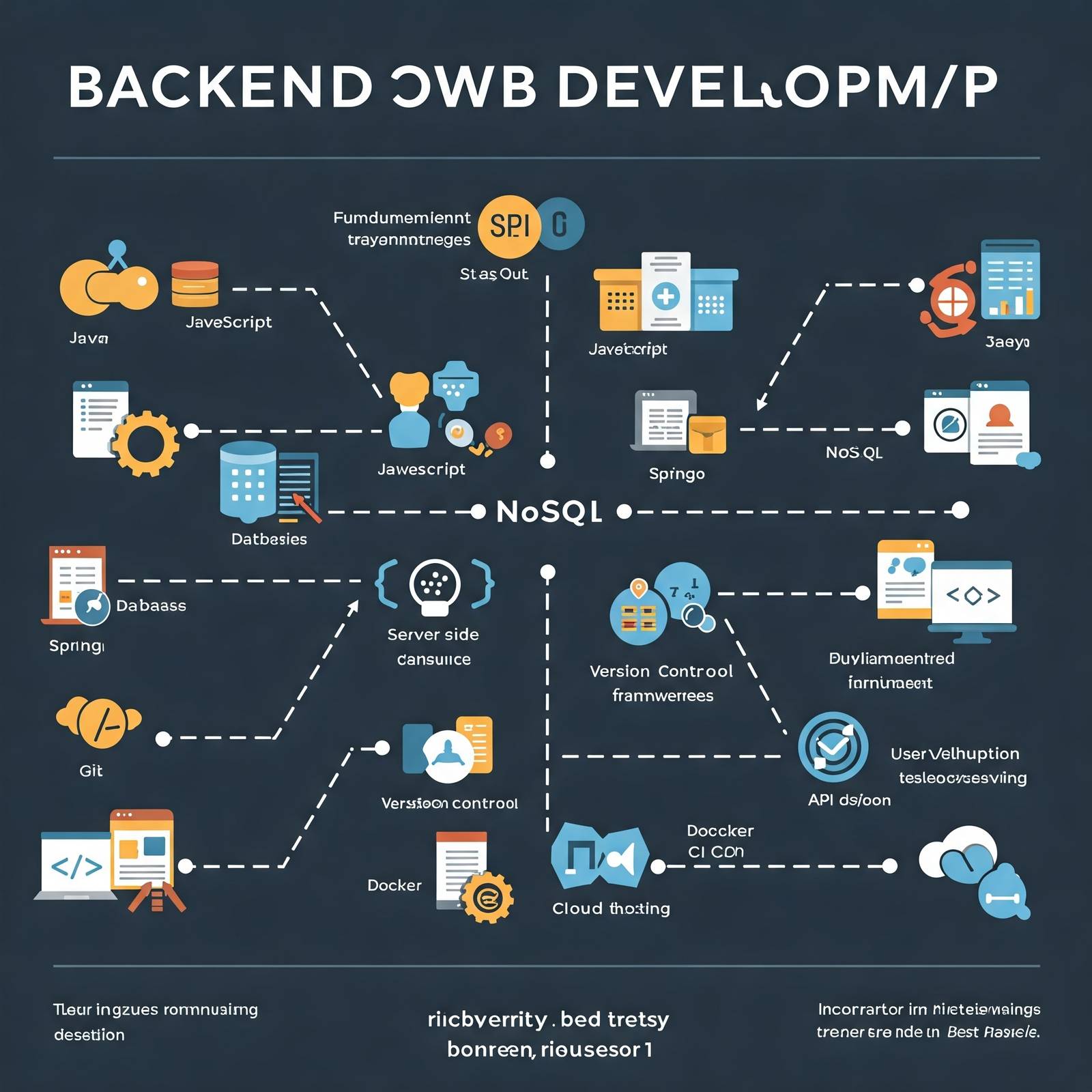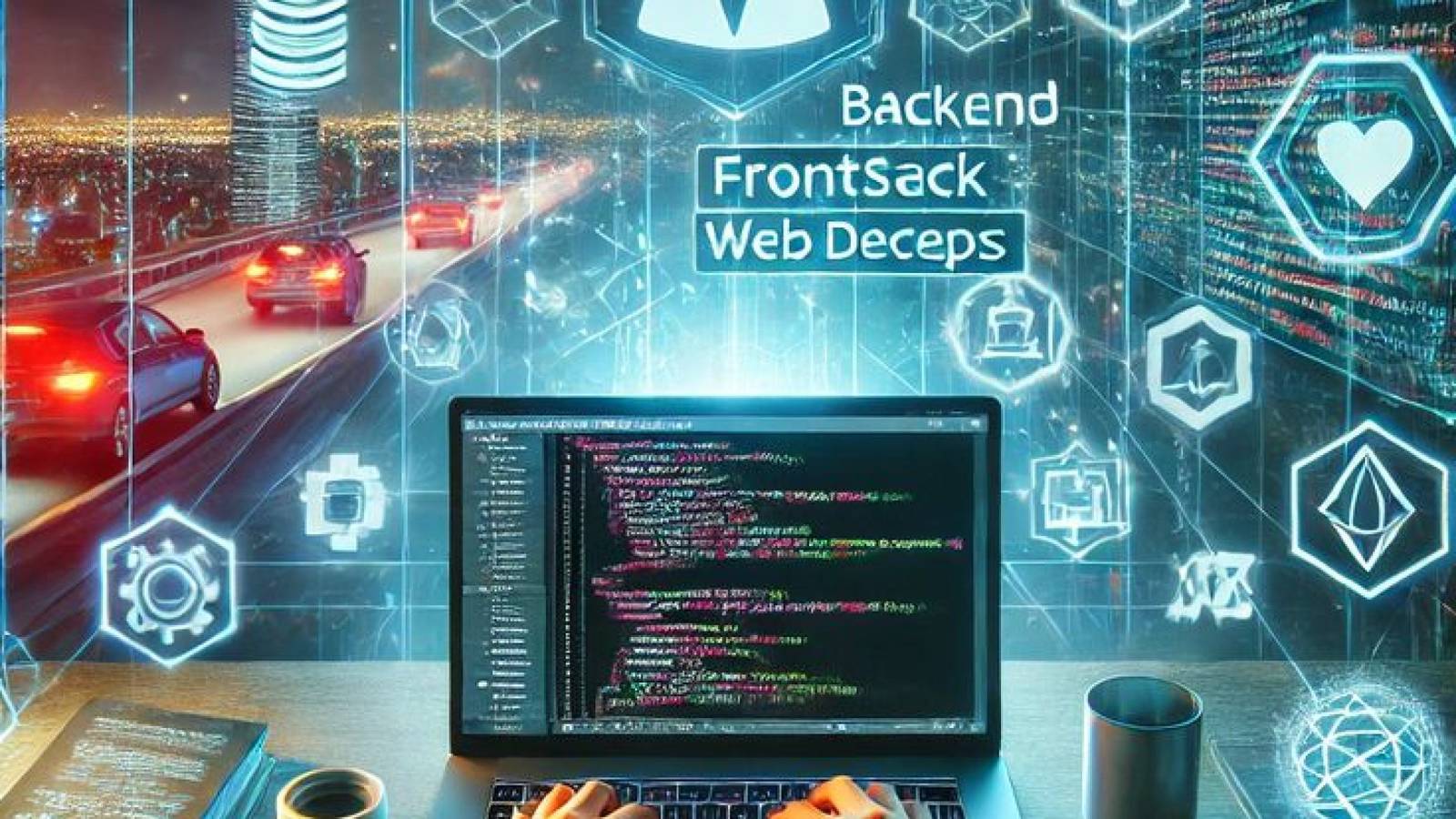Currently Empty: ₹0.00
Backend Web Development Roadmap: From Beginner to Job-Ready in 2025

Introduction
Backend web development roadmap is your blueprint to a high-paying tech career. In this comprehensive guide, we’ll break down exactly how to go from beginner to professional backend developer, covering essential skills like Python, Node.js, database management, and cloud computing. Whether you’re starting from scratch or looking to advance your career, this backend web development roadmap provides the step-by-step path to success in 2025 and beyond.
If you’re looking for a high-growth, high-salary career in technology, backend development is one of the best paths to take. This comprehensive backend web development roadmap will guide you through the essential skills, tools, and strategies to become a professional backend developer—and land a lucrative job.
By the end of this guide, you’ll have a clear, step-by-step plan to master backend development, along with insights into salary expectations, career growth, and job opportunities.
Why Choose Backend Development?
High Demand & Excellent Salaries
Backend developers are among the most sought-after professionals in tech. According to Glassdoor and Payscale, the average salary for backend developers in 2025 is:
Entry-Level: 70,000–70,000–90,000
Mid-Level: 90,000–90,000–130,000
Senior-Level: 130,000–130,000–180,000+
Companies like Google, Amazon, and startups worldwide are constantly hiring backend developers, making it a recession-resistant career choice.
Strong Career Growth & Specializations
As a backend developer, you can specialize in:
Cloud Computing (AWS, Azure, GCP)
DevOps & Infrastructure (Docker, Kubernetes, CI/CD)
Database Engineering (SQL, NoSQL, Big Data)
Cybersecurity & API Security
These specializations can increase your earning potential significantly.
Remote Work & Global Opportunities
Backend development is one of the most remote-friendly jobs in tech. Many companies hire backend developers from anywhere in the world, offering flexibility and high compensation.
Backend Web Development Roadmap: Step-by-Step Guide
Learn Programming Fundamentals
Backend web development roadmap is the most strategic path to a six-figure tech career. This backend web development roadmap guides you through every critical skill – from Python/Node.js to cloud architecture – with precise milestones for 2025. Following this backend web development roadmap, you’ll master:
Core programming languages (highlighted in our backend web development roadmap)
Database engineering
API development
Deployment strategies
Whether you’re starting from zero or upskilling, this backend web development roadmap (updated for 2025) delivers the fastest route to backend mastery and high-paying job offers.
Recommended Resources:
FreeCodeCamp (Free)
CS50 by Harvard (edX)
Automate the Boring Stuff with Python (Book)
Choose a Backend Programming Language
Pick one primary language to specialize in:
| Language | Best For | Popular Frameworks |
|---|---|---|
| JavaScript (Node.js) | Full-stack developers, startups | Express.js, NestJS |
| Python | Fast development, AI/ML | Django, Flask |
| Java | Enterprise applications | Spring Boot |
| Ruby | Rapid prototyping | Ruby on Rails |
| PHP | WordPress, legacy systems | Laravel |
Pro Tip: Start with Python or JavaScript if you’re a beginner—they have gentler learning curves.
Master Databases & Data Management
Backend developers work heavily with databases. Learn:
SQL Databases (Structured Data)
PostgreSQL (Open-source, powerful)
MySQL (Widely used, great for web apps)
SQLite (Lightweight, good for small projects)
NoSQL Databases (Unstructured Data)
MongoDB (Document-based, flexible)
Firebase (Real-time database for apps)
Redis (In-memory caching)
ORM (Object-Relational Mapping)
Sequelize (Node.js)
SQLAlchemy (Python)
Hibernate (Java)
Build & Consume APIs
APIs (Application Programming Interfaces) allow different software systems to communicate. Learn:
RESTful APIs (Standard for web services)
GraphQL (Modern alternative to REST)
Authentication (JWT, OAuth, Session Management)
Project Idea: Build a weather API that fetches data from a third-party service.
Work with Backend Frameworks
Frameworks speed up development. Some top choices:
Node.js: Express.js, NestJS
Python: Django (batteries-included), Flask (lightweight)
Ruby: Ruby on Rails
Java: Spring Boot
Pro Tip: Learn one framework deeply before exploring others.
Understand Servers & Deployment
Web Servers: NGINX, Apache
Cloud Platforms: AWS, Azure, Google Cloud
Containerization: Docker, Kubernetes
CI/CD Pipelines: GitHub Actions, Jenkins
Optimize Performance & Security
Caching: Redis, Memcached
Load Balancing
HTTPS & SSL/TLS
SQL Injection Prevention
How to Get Hired as a Backend Developer
Build a Strong Portfolio
Personal Projects (Blog API, E-commerce Backend)
Open-Source Contributions (GitHub)
Freelance Work (Upwork, Toptal)
Earn Certifications (Optional but Helpful)
AWS Certified Developer
Google Cloud Professional Developer
Microsoft Certified: Azure Developer
Network & Apply Strategically
LinkedIn Networking (Connect with recruiters)
Tech Meetups & Hackathons
Job Boards: Indeed, AngelList, We Work Remotely
Backend Developer Salary Breakdown (2025)
| Country | Entry-Level | Mid-Level | Senior-Level |
|---|---|---|---|
| USA | 70K–70K–90K | 90K–90K–130K | 130K–130K–180K+ |
| UK | £35K – £50K | £50K – £80K | £80K – £120K+ |
| India | ₹5L – ₹10L | ₹10L – ₹20L | ₹20L – ₹40L+ |
| Germany | €45K – €60K | €60K – €90K | €90K – €130K+ |
FAQs
How long does it take to become a backend developer?
With consistent effort, you can land an entry-level job in 6-12 months.
Do I need a degree to become a backend developer?
No! Many backend developers are self-taught or bootcamp graduates.
Which language is best for backend development?
Python & JavaScript (Node.js) are great for beginners. Java & C# are preferred in enterprise environments.
Final Thoughts
This backend web development roadmap provides a clear, structured path to becoming a professional backend developer. The demand for skilled backend engineers is growing rapidly, making it an excellent career choice.
At Cambridge Infotech, we offer industry-aligned training programs to help you master backend development and secure high-paying jobs. Start your journey today.
Learn more about
Boost your confidence and communication skills with Cambridge InfoTech’s Basic Spoken English Course. Designed for beginners, this interactive program helps you master everyday English conversations, pronunciation, and essential grammar. Learn from expert trainers through practical sessions and real-life scenarios. Start speaking English fluently—enroll now and open doors to better career opportunities.
Master Java programming with Cambridge InfoTech’s Core Java Course in Bangalore. This expert-led training covers fundamental to advanced Java concepts, including OOP, multithreading, collections, and real-world application development. Perfect for beginners and professionals alike, our hands-on approach ensures you gain industry-relevant skills for software development roles. Get certified and boost your career in Java programming – enroll today.
Become a Python expert with Cambridge InfoTech’s Best Master Core Python Course in Bangalore. This comprehensive training covers Python fundamentals, advanced concepts, and real-world applications to help you build strong programming skills. Learn from industry experts, work on hands-on projects, and prepare for a successful career in software development, data science, or automation. Enroll now and master Python like a pro








